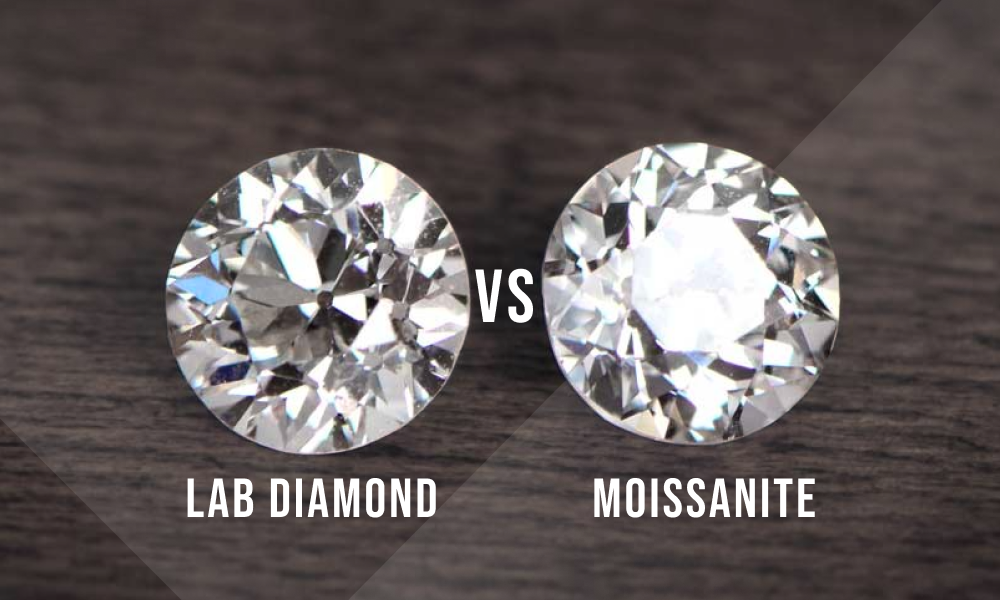Gold-plated jewelry is a great way to enjoy the look of gold without spending a fortune. It has become very popular because it looks expensive, but costs much less than solid gold.
In this article, we'll explore why people love 14k gold-plated jewelry. We'll explain what gold plating is, how long it lasts, and how to take care of it. You'll learn tips to keep your gold-plated pieces looking shiny and beautiful for as long as possible.
Whether you're new to gold-plated jewelry or already have some, this guide will help you understand and enjoy your accessories better. Let's discover why this affordable option is capturing so many hearts in the world of fashion!
Understanding Gold Plating

What is Gold Plating?
Gold plating lets you enjoy the luxurious look of gold without the high cost. It involves adding a thin layer of gold to a base metal like brass or copper. This process gives jewelry a beautiful golden shine, making it an affordable and stylish choice for anyone wanting to add a touch of elegance to their collection.
For your better understanding, let's discuss the types of gold jewelry:
Solid Gold
Solid gold jewelry is made entirely of gold. It’s highly durable and resistant to tarnishing, but this quality comes at a high price.
Gold-filled Jewelry
Gold-filled jewelry features a thicker layer of gold bonded to a base metal. It's more durable than gold-plated jewelry and less costly than solid gold, making it a great middle-ground option.
Gold Plated Jewelry
Gold-plated jewelry has a thin layer of gold applied over a base metal. It's the most affordable option, offering the look of gold at a lower cost. However, it’s less durable and more prone to tarnishing than solid gold or gold-filled pieces.
The process of gold plating begins with preparing the base metal, which is cleaned and polished to ensure a smooth surface. The metal is then electroplated in a solution containing gold ions, bonding a thin gold layer onto its surface. The final step involves polishing the piece to a radiant shine and sometimes adding a protective coating to enhance its resistance to tarnishing.
To understand different types of gold jewelry, read: Types of Gold Jewelry
Gold Plating Thickness
Gold plating involves applying a thin layer of gold onto base metals like brass or copper, creating a shiny golden finish. The thickness of this gold layer, measured in microns (one-millionth of a meter), significantly affects the jewelry's durability and appearance.
Thicker gold plating improves durability, providing better resistance against wear and ensuring the jewelry maintains its shine for longer. It also enhances the color, giving a richer and more consistent gold tone that enhances the overall appeal of the piece.
While thicker plating increases costs due to more gold being used, a thickness ranging from 2 to 5 microns is ideal for everyday jewelry, balancing durability with affordability and aesthetic appeal.
What Affects the Longevity of Gold Plating

Thickness of the Plating
Gold plating involves applying a thin layer of gold onto a base metal, giving jewelry its golden appearance. The thickness of this layer is crucial for several reasons:
- Durability : Thicker gold plating offers better durability, withstanding regular wear and tear more effectively. Thinner layers may wear off quicker over time.
- Color and Value : A thicker layer ensures a richer, more consistent gold color, enhancing the jewelry's aesthetic appeal and perceived value.
- Cost Considerations: Thicker plating requires more gold, which generally increases the cost of the jewelry.
Gold plating thickness is measured in microns, where one micron equals one millionth of a meter. To provide context:
- A human hair is about 100 microns wide, showing how thin gold plating can be.
- Different jewelry types have varying recommended thicknesses to balance durability and cost-effectiveness:
- Rings and bracelets typically range from 2 to 3 microns.
- Pendants and earrings are usually plated with 1 to 2 microns.
- Necklaces and chains may range from 2 to 3 microns.
- Findings like clasps and pins are often plated with 2 to 3 microns.
Following these standards helps in choosing the right plating thickness for different jewelry pieces. Balancing durability with cost is essential for longevity and maintaining the jewelry's aesthetic appeal. Proper care and maintenance also play a crucial role in extending the lifespan of gold-plated jewelry.
Base Metal Quality
The base metal serves as the foundation for the thin layer of gold. Common options include copper for good durability, silver for strong bonding with gold, titanium for excellent corrosion resistance, and brass, which requires careful handling during plating. Surgical-grade stainless steel is also popular for its strength and hypoallergenic properties.
Choosing a base metal that resists corrosion is essential to prevent tarnishing and ensure the longevity of gold-plated jewelry. This helps maintain its appearance and durability over time.
Also Read: What is 18K Gold Plated?
Frequency of Wear
Jewelry worn daily tends to wear out faster due to regular use. Using it occasionally for special occasions helps preserve its gold plating.
Various elements can affect gold-plated jewelry:
- Water: Prolonged exposure to water, especially saltwater or chlorine, can weaken the gold layer.
- Sweat: Sweat contains salts and acids that can cause tarnishing and wear.
- Chemicals: Household chemicals, perfumes, and cleaning agents can damage the gold plating.
- Friction: Activities that involve rubbing or friction can wear down the gold layer over time.
Care and Maintenance
Like every other types of jewelry, gold-plated pieces also last longer if you properly take care of them. Regular cleaning, and professional cleaning at times, will make sure your gold-plated jewelry last a long time.
Typical Lifespan of 14K Gold Plated Jewelry

Average Duration
14k gold-plated jewelry usually lasts about 2 to 3 years with proper care, though higher-quality pieces can endure up to 5 years. The thickness of the gold layer is crucial for durability, as thicker plating tends to last longer by resisting wear better.
The way you use your jewelry also affects its lifespan. Regular wear can speed up the wearing off of the gold layer, while exposure to water, sweat, and chemicals can cause it to tarnish or lose its shine. To keep your jewelry looking its best, it's important to clean it gently after each use, avoid exposing it to harsh substances, and store it in a dry place.
Duration Based on Jewelry Type
Rings and Bracelets
Rings and bracelets face more wear and tear because they touch surfaces and move with our hands and wrists daily. Constant friction from activities like typing or using hand sanitizers can wear down the gold plating faster. Typically, gold plating on rings and bracelets lasts about 1-2 years with regular wear.
Necklaces and Earrings
Necklaces and earrings encounter less friction since they don't rub against surfaces as much as rings and bracelets. They hang or sit on the ears, which reduces wear. Because of this, gold-plated necklaces and earrings can last longer, usually around 2-3 years or more before showing signs of wear.
Extending the Lifespan of Your Gold Plated Jewelry

Cleaning and Maintenance
After wearing your gold-plated jewelry, it's essential to clean it regularly to maintain its shine:
- Regular Wiping: Use a soft microfiber cloth or a damp cotton ball to gently wipe down your jewelry. This helps remove oils and dirt accumulated during wear.
- Mild Soap Solution : For deeper cleaning, prepare a solution of warm water mixed with a few drops of mild dish soap. Let your jewelry soak in this solution for 15 to 30 minutes, then gently scrub it with a soft-bristled toothbrush or a jewelry brush.
- Effervescent Tablets : Consider using effervescent jewelry cleaning tablets for quick and convenient cleaning. Follow the manufacturer's instructions to ensure safe usage.
- Avoiding Harsh Chemicals: To protect the delicate gold plating from damage:
- Perfumes and Lotions: Apply perfumes, lotions, and other cosmetics before putting on your jewelry to prevent chemical interactions that can tarnish or wear down the plating.
- Cleaning Agents: Remove your rings or bracelets before using household cleaning agents or chemicals to avoid exposure that could harm the gold plating.
- Storage: Store your gold-plated jewelry separately from cleaning supplies and other harsh chemicals to prevent accidental contact, which can compromise its finish over time.
For a detailed cleaning guide, read: How to Clean Gold Plated Jewelry?
Protective Measures
Keeping your gold-plated jewelry away from water and sweat is crucial for maintaining its appearance.
Remove your jewelry before swimming, showering, or exercising. Water, especially chlorinated pool water or salty seawater, can damage the gold plating. Even regular shower water can gradually wear it down. Sweat contains salt and acids that can tarnish the plating and speed up wear.
When your gold-plated jewelry starts to show signs of wear, you have the option of replating. This process involves adding a fresh layer of gold to restore the jewelry's original shine and color. Professional jewelers offer replating services, which can breathe new life into your favorite pieces.
What to Do When Gold Plating Wears Off

Over time, gold-plated jewelry might start to fade or get scratched. If this happens, you can take it to a jeweler for **replating**. Replating adds a new layer of gold to your jewelry, making it look like new again. This service is great for pieces you wear often and want to keep looking their best.
Replating is a good way to renew your favorite items and keep them shining brightly. By avoiding water and sweat and considering replating when needed, you can enjoy your gold-plated jewelry for many years.
Styling Tips
Everyday Wear
When choosing pieces, go for ones with thicker gold layers like vermeil or gold-filled options as they are more durable. Avoid thin gold plating which may wear off quickly. Consider pieces with sterling silver or brass bases for added strength.
For mixing and matching, layer necklaces of different lengths for a stylish look. Mix delicate chains with pendants or charms. Stack bracelets including bangles and cuffs, combining them with materials like leather or fabric for texture.
Pair gold-plated studs or hoops with other metals like silver or rose gold for a chic contrast in earrings. Experiment with asymmetrical styles for a trendy twist. Mix gold-plated rings on various fingers, adding solid gold bands or gemstones for variety.
Complete your ensemble with a gold-plated watch and coordinating bracelet or bangle. The key to everyday styling is combining gold-plated pieces with different metals, textures, and colors to create unique and personalized looks. Have fun experimenting with your jewelry!
Special Occasions
For occasional wear, opt for delicate gold-plated pieces like intricate necklaces or dainty earrings, reserving them for special events to prevent excessive wear and scratching. When not in use, store your jewelry in a soft pouch or lined jewelry box to protect it from dust, moisture, and potential damage.
Be mindful of contact with perfumes, lotions, and harsh chemicals; apply these products before wearing your jewelry to avoid tarnishing .
To highlight your gold-plated jewelry on special occasions, choose statement pieces that draw attention. Chunky cuffs, oversized rings, or elaborate necklaces work wonderfully to make a bold statement. Pair your gold-plated jewelry with darker or neutral-colored outfits to create contrast and make it stand out.
For instance, a black dress paired with a chunky gold-plated necklace creates a striking look. Experiment with layering delicate gold-plated chains with other necklaces for an elegant, layered effect.
In terms of earrings, opt for eye-catching styles like hoops, chandeliers, or studs to frame your face beautifully.
Consider an updo hairstyle if you're wearing a statement necklace to showcase it elegantly. These styling tips will help you make the most of your gold-plated jewelry on special occasions, allowing it to shine and complement your outfit with style and sophistication.
Conclusion
To sum up, we've looked at what affects how long 14k gold-plated jewelry lasts and how to take care of it. These pieces can last longer depending on how thick the gold layer is, how often you wear them, contact with water and chemicals, and the quality of the metal underneath.
To keep your gold-plated jewelry looking good, clean it gently and regularly, store it safely, avoid perfumes and lotions when wearing it, and check for wear and fix problems early.
If you want jewelry that lasts even longer, you could try solid gold or gold-filled pieces. Solid gold lasts the longest but costs more. Gold-filled jewelry is a good middle ground - it lasts longer than gold-plated but isn't as expensive as solid gold.
No matter what type you choose, taking good care of your jewelry will help it stay beautiful for years to come.



































































